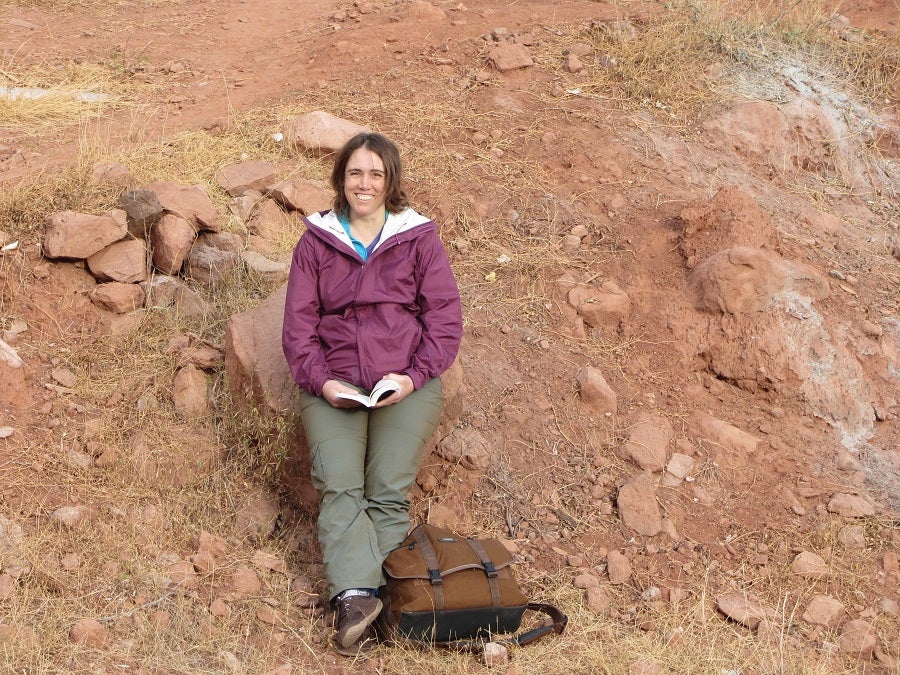lens
She Reads Rocks
For geologist Beverly Saylor, Earth's layers are like history books
 PHOTO: Courtesy of Darin Croft
PHOTO: Courtesy of Darin CroftBeverly Saylor caught up on reading during a break in travel to Quebrada Honda, Bolivia, for fieldwork.
Where other people see rocks, geologist Beverly Saylor, PhD, sees a story. And not just any story—our story, the story of life on Earth.
Saylor, the Armington Professor focusing on stratigraphy and sedimentology at Case Western Reserve University, sees traces of the world as it once was, millions of years ago; she detects them in the layers of sediment, deposits of volcanic ash, and in fossilized remains of animals and plants.
And the decades she's spent "looking at rocks as history books" have helped produce groundbreaking discoveries—like those she's made with renowned paleoanthropologist Yohannes Haile-Selassie, PhD, curator of physical anthropology at the Cleveland Museum of Natural History and an adjunct professor at CWRU—that have changed our ideas about human evolution.
Since 2006, she has worked with Haile-Selassie inWoranso-Mille in northeastern Ethiopia, using her geological expertise to determine the age of the fossils he collects and shape an understanding of their habitats.
In 2019, she, Haile-Selassie, Stephanie Melillo, PhD (CWR '05), and an international team of scientists reported a remarkable discovery: a 3.8 million-year-old cranium from the early human ancestor species, Australopithecus anamensis. This and previous discoveries confirmed that multiple species of Australopithecus coexisted more than 3 million years ago, upending previous conceptions of a linear sequence.
Saylor and her colleagues determined the fossil's age using different methods to date the layers of ash and sediment above and below where the fossil was discovered.
By studying those same geologic layers—as well as traces of pollen and plant material—they could vividly describe the area, explaining, for example, that the cranium belonged to an individual who lived by a river that flowed into a lake, which, over time, was buried by basalt lava. Understanding that landscape is a key to helping the team answer the big question: Why were there multiple potential human ancestor species at Woranso-Mille, but not in a nearby region where many fossils—all of the same species— have been found? The answer to this question, the team hopes, will enhance our understanding of human evolution.
In Bolivia's Quebrada Honda Basin, Saylor has similarly analyzed fossil-rich environs in work with Darin Croft, PhD. He's an anatomy professor at the university's School of Medicine, and a leading expert on South American prehistoric mammals. The fossils collected there are 12 million to 13 million years old and include many species not found elsewhere. These discoveries have prompted research questions about when the mountains rose, for example, or why there were so many unique species. "She is like the glue that holds everything together," Croft said of Saylor's ability to craft the "big picture" from a wide variety of information. "She is an excellent thinking partner in terms of figuring out what the data are telling us."
Saylor said the work she's done to define the sedimentary history in both Ethiopia and Bolivia has laid the groundwork. Now, "we can start doing real experiments," she said,testing hypotheses about "how the interplay of climate, tectonics, habitat and water availability contributed to the development of rich species diversity and influenced human evolution."





